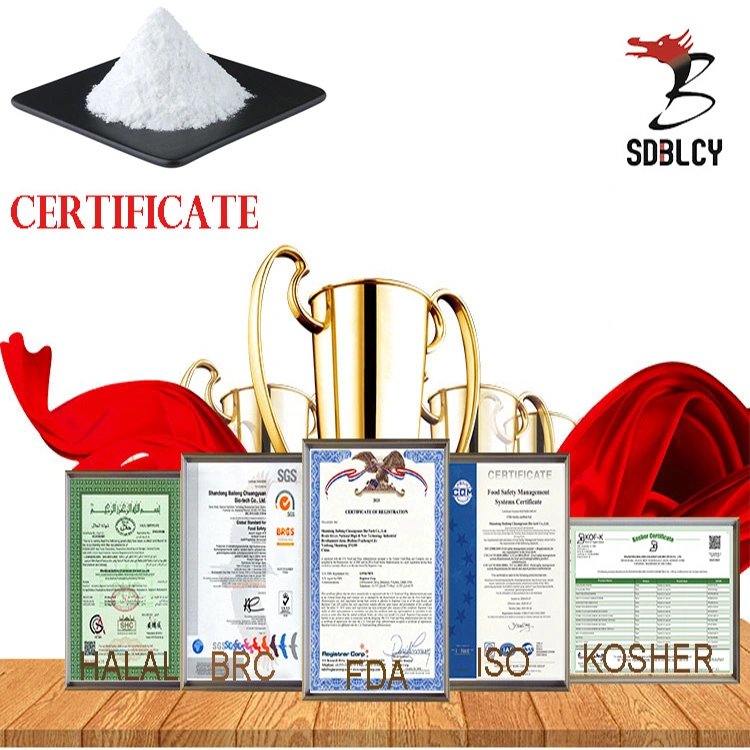Polydextrose Fiber Supplement
1.Can replace sugar and fat in food and improve food texture and taste.
2.Taste fresh, easy to release the food flavor. In various applications, have the function of improving the food flavor.
3.Widely recognized as a good source of dietary fiber.
4.Prebiotics which can improve the digestive tract health.
5.Low blood glucose response, metabolism does not need insulin, suitable for diabetic patients.
6.Satiety, help control body weight, apply to consumers who want to control the carbohydrate intake.
7.Well toleration.
Product Description:
Polydextrose is commercially one of the largest types of soluble fibres with an approximate volume of 80 000 MT. It is more expensive than sorbitol because, although derived from starch, the manufacturing process is more difficult because of the refining stages needed to make an excellent product. Polydextrose is used in all types of food products such as cakes, pastries, sweet desserts, ice-cream, sugar confectionery and chocolate as well as meat products. Mostly it is used as a low calorie bulking agent with just 1 kcal per gram but is also a soluble fibre and sustained prebiotic and it has been shown that as little as 4 grams per day of polydextrose has a measurable prebiotic effect. Fermentation in the large intestine yields short-chain fatty acids (including butyrate) and the growth of intestinal Lactobacillus and Bifidus is enhanced, giving improved gastrointestinal function with no adverse effects. Polydextrose is a polysaccharide composed of randomly cross-linked glucose units with all types of glycosidic bonding (1–6 bonds predominate) containing minor amounts of sorbitol and citric acid. It has a molecular mass range of 182–5000 D with an average of 2160 D. Polydextrose is a high molecular weight molecule so is not as effective at reducing aw compared to sorbitol or xylitol. Its benefits have been found mostly in reduced sugar and calorie food where it replaces sugars with typical usage levels above 5%. There is also commercially available a hydrogenated form of polydextrose that has no reducing properties and is resistant to acid and alkaline conditions. Essentially refined polydextrose is non-sweet and has a neutral taste (but some types can be bitter and acidic in nature so care should be taken in the quality that is selected) and at effective usage levels has no effect on the taste of the food. Figure 5.9 shows the water activity of polydextrose relative to sucrose. At low concentrations (below 60%), sucrose lowers aw slightly more than polydextrose. At higher concentrations polydextrose is more effective at reducing aw as it is highly soluble in water. This is because sucrose crystallises at high concentrations and these crystals do not interact with the water to lower aw. Polydextrose can function as a humectant in foods to slow down undesirable changes in moisture content as shown in the moisture sorption and desorption isotherm in Fig. 5.1. As discussed earlier in the chapter, it retains moisture because of its Tg properties that preserve texture even when moisture has been absorbed. A comparison of polydextrose and other carbohydrates can be seen in Fig. 5.10. Polydextrose helps to retain moisture, texture and shelf life in a range of product applications, from confectionery and baked goods to reformed meat products. Polydextrose technically has greater potential than sorbitol as a humectant ingredient or as part of a humectant system, but is required at quantities over 5% w/w.










